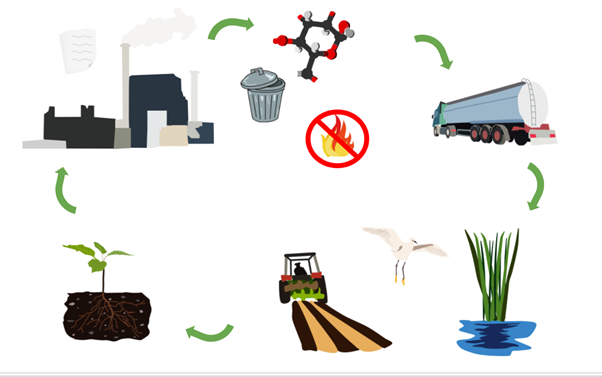Our challenge
How can we increase soil carbon sequestration?
Our idea
There is too much CO2 in the atmosphere and not enough carbon in the soil. So, how can we increase soil carbon sequestration, whilst reducing emissions to help create a more sustainable future?
Globally, paper mill factories produce 50 mil tonnes of lignin waste every year, Currently, 98% of this waste is burned to inefficiently power the mill and releases CO2 into the atmosphere. Lignin contains 30-80% carbon and is notoriously difficult to break down. So what if we could stop burning the waste and put its high carbon content to use in the UKs soils?
We propose that we utilise the lignin waste by incorporating it into wetland and agricultural soil. Wetlands have an anoxic environment, lacking in the enzyme required to breakdown lignin, creating an ideal environment for a carbon sink. Lignin slurry could also be sprayed on agricultural fields as fertilizer, increasing soil carbon and productivity. This technique is both economically and ecologically viable in both the short and long term, utilising existing infrastructure and background research to maximise the probability of success. We are taking a waste product which is currently unused or burnt and recycling it into natural systems, helping to create a circular economy. This technique has few perceived risks with a myriad of benefits outside of the carbon sequestration potential.
We are not reinventing the wheel, just steering the car towards a brighter, more sustainable future.

Visual representation of our idea, drawn by Joanna.